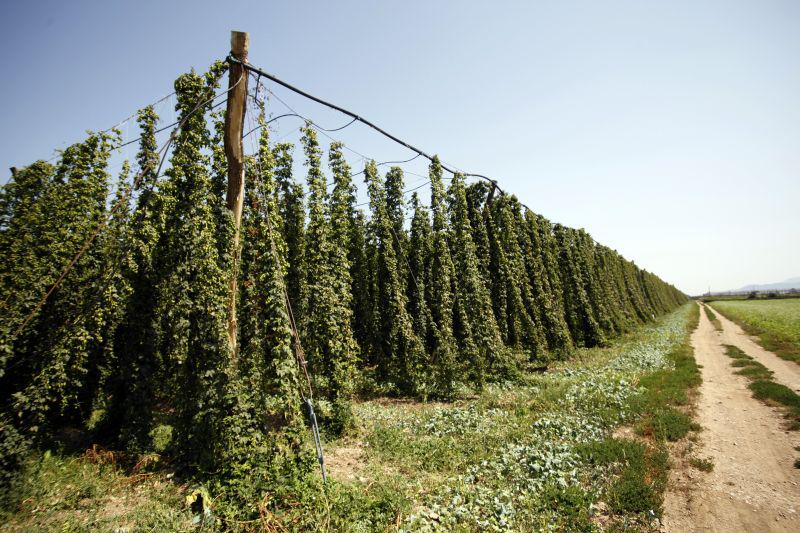
The basketball team in the Slovenian town of Polzela is known as the Hops. The name doesn’t just refer to the players’ jumping skills: the cultivation of hops -- small flowers used to give beer its distinctive flavor – also happens to be one of the most important economic activities in the Savinja Valley.
The most obvious sign of hops cultivation in the area are trellises above many of the fields. The plants spend most of the spring and summer on ropes that extend from the trellises. In late summer, the flowers are harvested and taken to a hop house for drying.
It’s an ancient process, dating back to the Middle Ages, but hops-growing came to the Savinja Valley fairly late. After some unsuccessful efforts in the mid-19th century, Janez Hausenbichler, a local nobleman, planted hops seedlings from Germany. Other noblemen, whose local crops had recently been destroyed by disease, decided to follow his lead. The terrain of the area proved ideally suited to the often-fickle crop and hops production soon began to soar.
Local hop-growers founded the Southern Styria Hops Association, which promoted the local hops abroad, and brought increased prosperity to the region. Hausenbichler even went on to write a manual on hops cultivation that became something of a bible within the industry. Meanwhile, hops pickers came from far and wide in hopes of earning some money working the fields.
Today, the “Styria hops,” as Slovenian-grown varieties are usually known, are prized by beer connoisseurs and have made Slovenia one of the world’s leading producers of the crop in the world. Only a handful of much better established producers, such as the U.S., China, Germany, and the Czech Republic, rank ahead of little Slovenia, which produces some three percent of the world’s hops.
A former hop-drying facility in the town of Žalec has even been transformed into the Eco Museum of Hop-Growing, There, visitors can acquaint themselves with the history of hop production in Slovenia and learn how hops are grown, harvested, dried, and packaged.
They also learn about the lifestyle of the people who have cultivated hops through the decades. Some of the production methods have changed, but the overall process remains very much like it was a century ago. Today, hops pickers come from as far away as Romania, and hops growing promises to remain an indispensable part of Savinja Valley’s identity for years to come.

































































